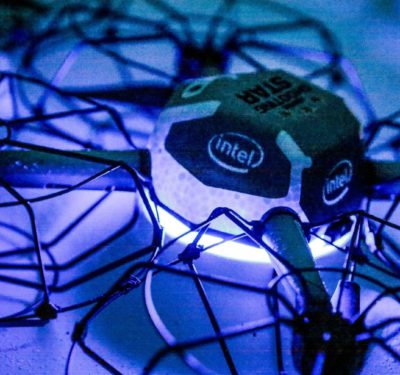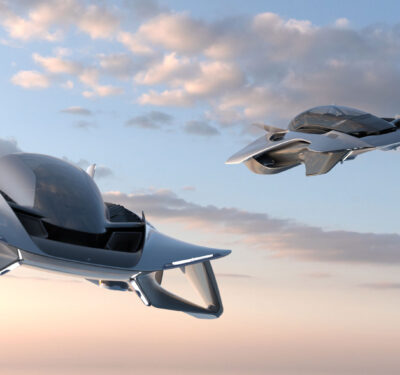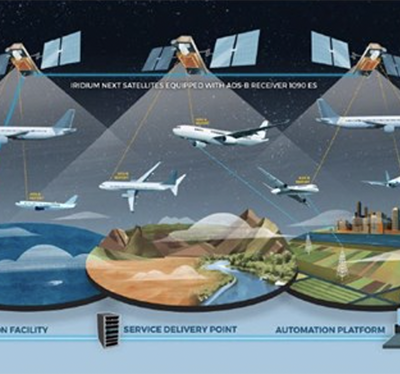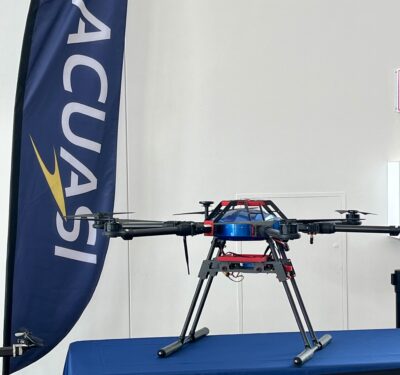“E Pluribus Unum”—“Out of Many, One”—is the traditional motto of the United States. In the UxS realm, the Tomahawk Ecosystem expands that maxim; its “single pane of glass” user experience—its physical controller and software application—achieves common control of multiple multidomain uncrewed systems and links them to each other. The Ecosystem supports new technologies and can quickly integrate AI capabilities, providing warfighters with an intuitive, effective, soldier-first solution.
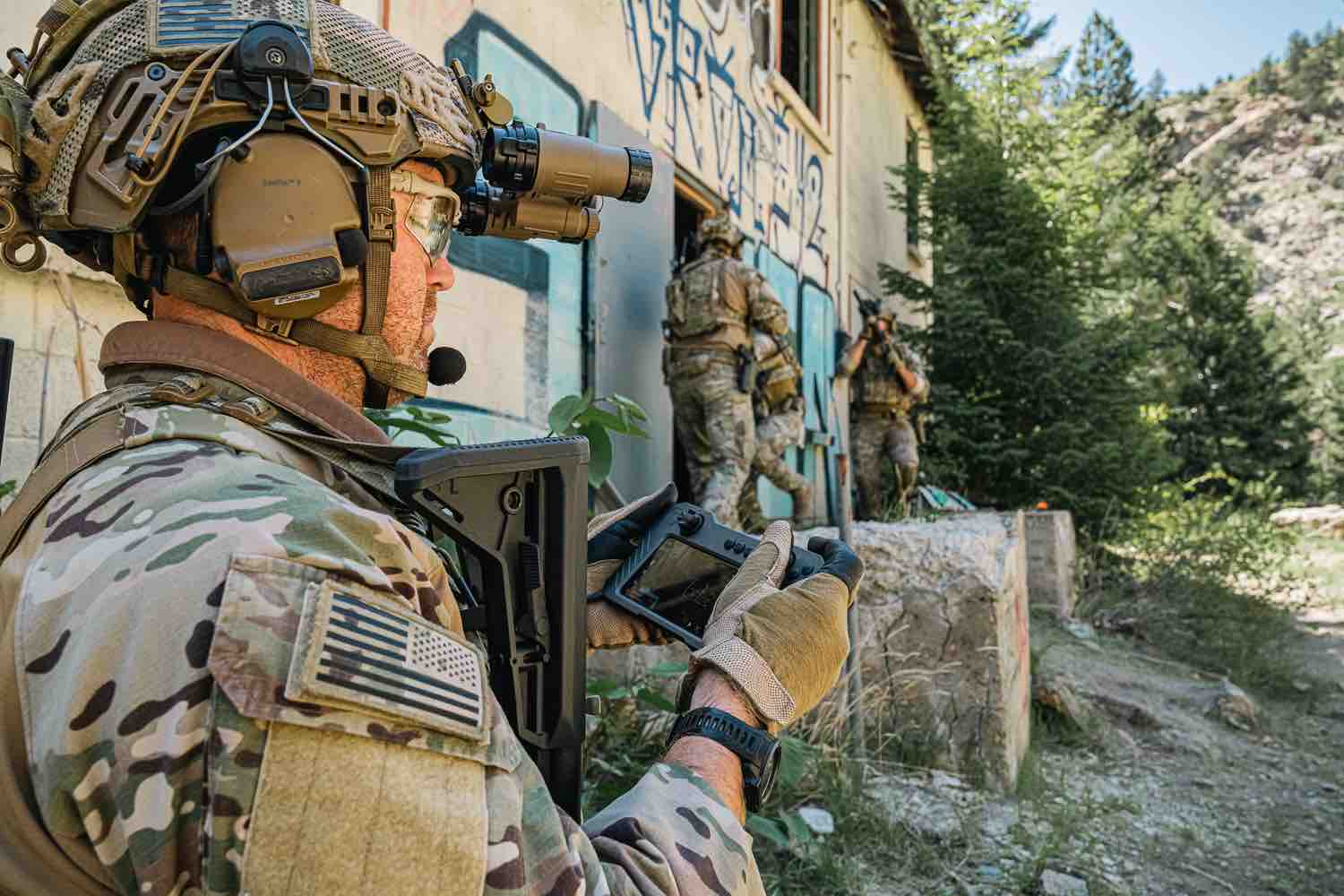
Kinesis is already being used across the U.S. DOD, by the Five Eyes international intelligence alliance and by other international customers. AeroVironment, then a Tomahawk customer, was confident enough about its open architecture and advanced networking analytics to pay $120 million in cash and stock to acquire Tomahawk Robotics last September. The company continues to exist within AV’s sUAS business unit and operates from Melbourne, Florida.
“We’re able to accelerate our implementation of AI and autonomy into AeroVironment’s platforms, enabling…our customers’ operational needs,” Wahid Nawabi, the company’s chairman, president and CEO, said after the acquisition.
“We will be the third generation of ground control systems within AV, an interface for its family of systems,” Scott Bowman, now GCS product line manager, explained. Bowman, who came over from Tomahawk Robotics, is charged with the direction of all of AV’s GCS product lines.
At the same time, Tomahawk’s products will remain agnostic for the wider market.
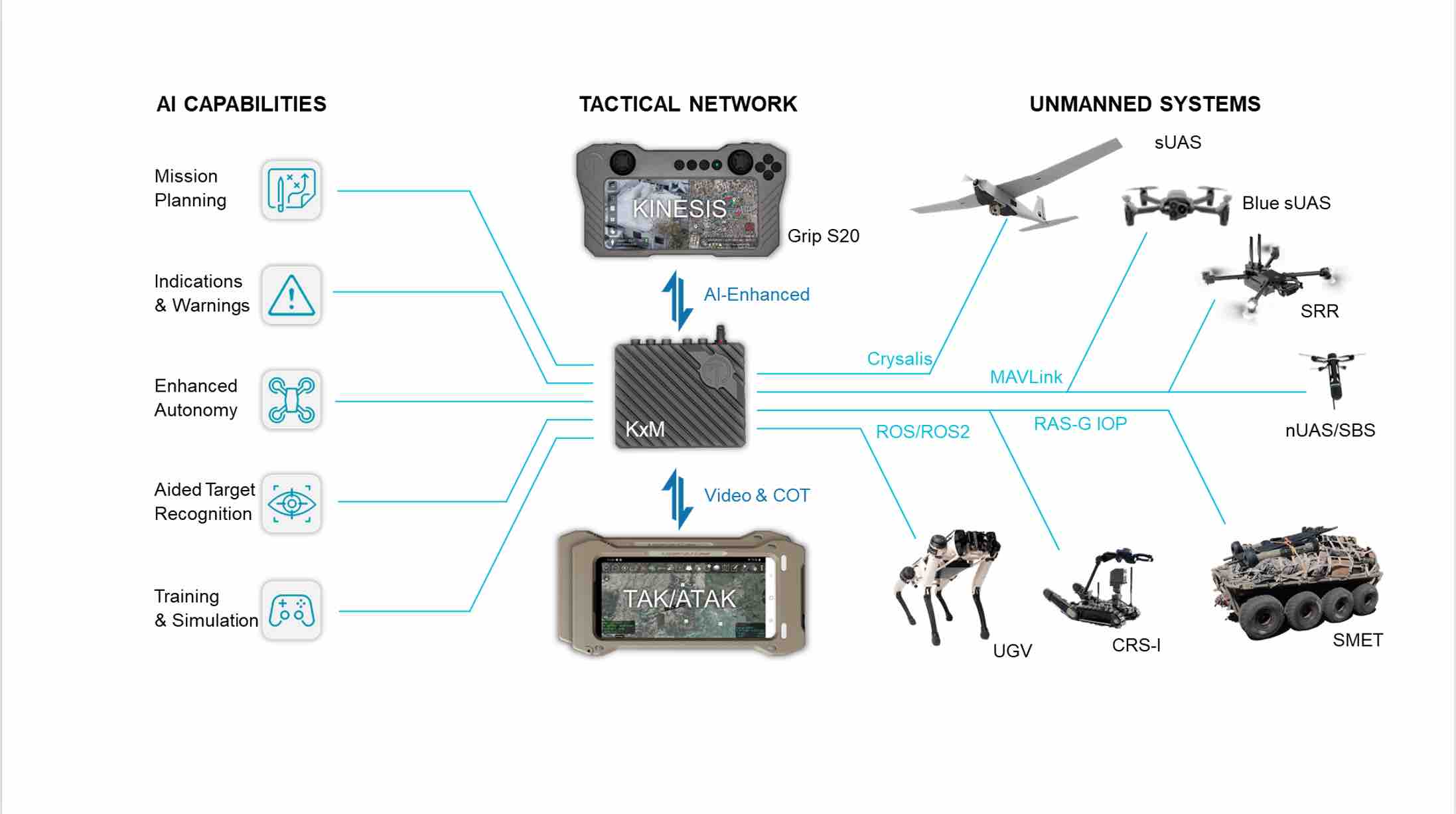
THE ECOSYSTEM
“We’ve been day-one invested in the dismounted soldier,” Bowman affirmed, detailing the Ecosystem of AI-enhanced common control. Key Ecosystem elements include Kinesis, the common control and Tactical Network software, a Grip family of battlefield-compatible controllers, wearable MxC-Mini data links, KxM AI edge devices and a cable-free RAID System kit.
“The way we architected the Kinesis software allowed it to run in the background,” Bowman said, “so the operator can flip between other pieces of software without losing connectivity to their uncrewed systems. Any of the points of interest can be passed between Kinesis users and the greater TAK/ATAK [the Android Tactical Assault Kit] network.
“Also, the team lead or company commander can say, ‘Get me eyes on that’ and they can push that digitally to the UxS operator. There’s no calling it in, there’s no typing coordinates—the operator can just receive the network update and that becomes another point of interest within a mission planning or quick mission system that allows any vehicles integrated with Kinesis to action it.”
The Grip controller family running Kinesis allows multiple systems to be viewed on that single pane of glass. “We allow you to buy the controller with or without the mobile device,” Bowman said. Tomahawk’s controllers use DoD-approved Samsung devices running Android; it’s estimated that the U.S. Army has bought more than 40,000 Samsung S20 tactical edition phones. Using Grip, “they can provision new pieces of hardware in systems they already own. It also makes it very easy to change out.”
Employing the Army’s Nett Warrior standard, Grip is designed to maximize and share interconnected solutions on the battlefield. “We did not make it grow more than 0.79″ thick,” Bowman explained. “Otherwise, when the warfighter wears it on his chest he cannot get to his magazines. It cannot be wider than 5.37″ because he cannot shoulder a weapon.”
Multiple AI capabilities, from enhanced autonomy and aided target recognition to radio frequency (RF) spectrum synthesis, come from Kinesis Expansion Module (KxM) edge devices. “It’s the piece that allows you to talk out to the tactical network,” Bowman said. “The Kinesis Compute API [Application Programming Interface] provides a common set of full-motion video in one format. We have a location interface that allows you to put things on our moving map, so if AI finds things along the way they can place those down.”
Continuing the desire to free up soldiers, MxC-Mini radios repackage widely available data links and makes them wearable. The cable-free RAID System has similar capabilities to KxM but uses a backpack-like chassis solution that adds agility for what’s being called the Hyper Enabled Operator.
“We’re making things not very complex,” Bowman said. “Nobody has to retrain. You don’t have to be experienced to use it.”
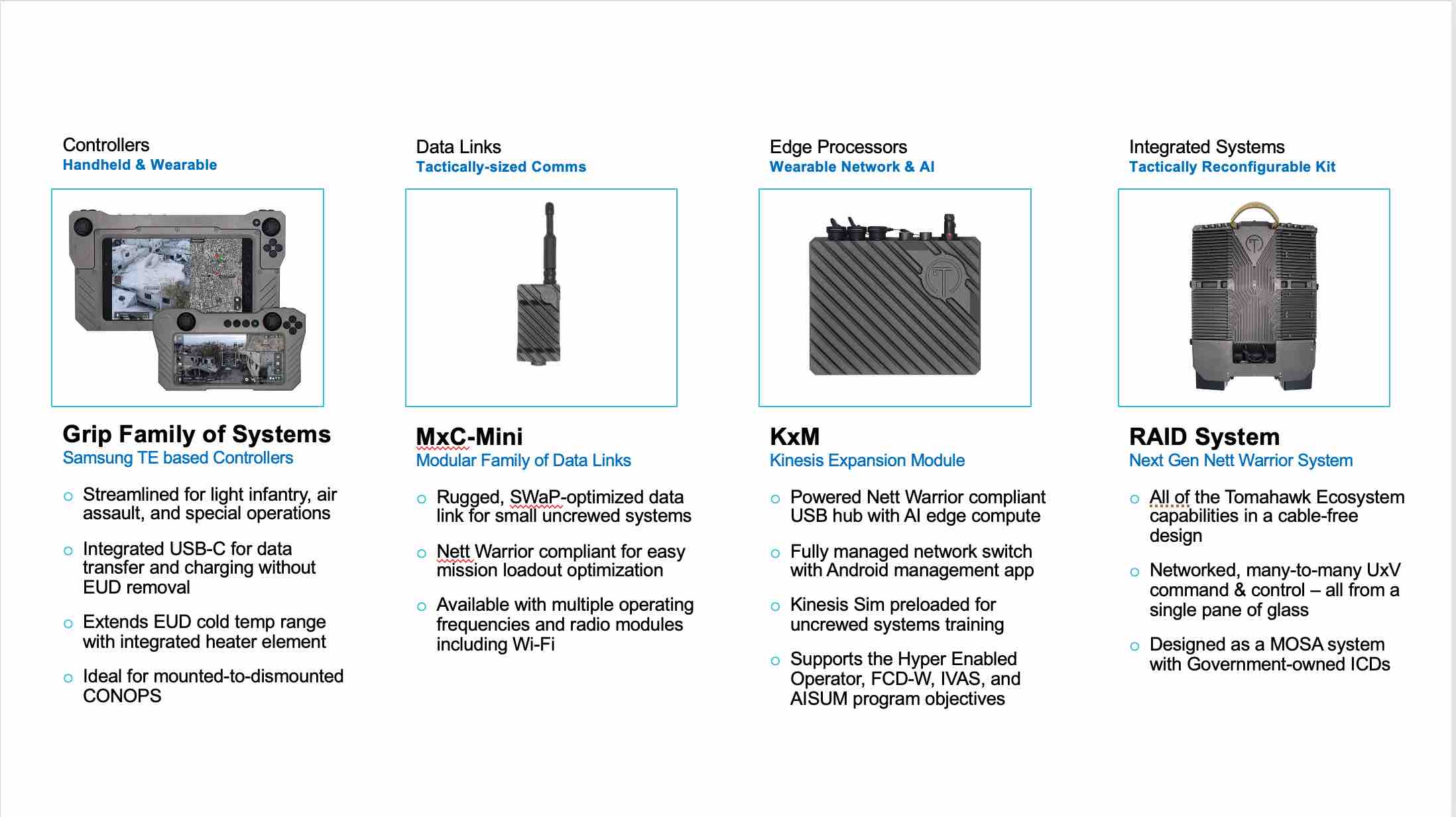
OPEN WIDE
“Open architecture is here to stay,” Bowman continued, “especially in the world of MOSA [Modular Open Systems Approach].”
Kinesis realizes this through SDK [Software Development Kit] documentation sets and APIs that enable third parties to integrate custom sensors, unmanned systems and advanced
capabilities hosted on KxM. They offer a consistent interface to solve a frequent problem: different formats can require costly and time-consuming decoding to find what users actually care about. “We ingest mobile video formats from a wide variety of uncrewed systems and turn that into a single full-motion video format for developers,” Bowman said. “Once they integrate behind the API, there’s no need for additional UI capabilities.”
Bowman amplified the philosophy. “We’re trying to give users the ability to add their own autonomy functions”—these can include swarming, and also new 3D maps with additional heuristics able to show real-time bomb damage assessment and mission planning for those on the network.
“Customers understand the power of the openness,” Bowman said approvingly. “The creativity of what customers are doing with the SDK always surprises me.”

FROM START-UP TO AEROVIRONMENT
Bowman, who described himself as “employee number one,” traced Kinesis’ evolution since Tomahawk was founded in 2018.
“We set out to look at the universal common control piece. The hard problem to make all this interoperate was that the requirements just were not there between each of the programs to easily communicate and talk together. Fundamentally, we recognized the problem was in the network. Especially when you talk about security boundaries. Nothing was prescribed to be able to allow this drone and that ground vehicle to work together at the same time.”
To address this, Tomahawk started with an architecture that could network key pieces of technology, offering a unified user perspective to see and deal with multiple systems. That, Bowman said, would be “a piece of hardware, a controller and one piece of software that could talk to all the disparate and multidomain robotic capability over their native command data links. We were highly focused on how to integrate different kinds of vehicles, different modalities—air, ground, water—and getting the architecture right.”
Tomahawk closed a funding round and had an architecture developed by the end of 2020. The response was strong—but with a caveat: “We had 60 employees and that was overwhelming,” Bowman explained. “We quickly realized that we were not going to scale like that. It became obvious that for some technical objectives of most of our customers we needed to make a series of SDKs to allow different technologies to come into our ecosystem.”
AeroVironment’s 20-plus times more personnel and large user base offered developmental and business muscle. AeroVironment can connect what Bowman called “disparate, best-in-class systems” into a full suite. “There’s one common user interface to make it actionable data to scale.”
Bowman outlined the business model. “If you buy our Grip controller, then Kinesis runs automatically. AeroVironment offers variable-duration and commercial licenses to customers, as well as more traditional maintenance contracts. A one-year Development License subscription—a digitally signed certificate that unlocks the plug-in architecture—allows users to integrate and experiment with the SDKs at their own pace. Licensed software can be keyed to set a boundary between ITAR and non-ITAR use by the end user.
Currently, Kinesis can control 18-plus uncrewed systems from more than a dozen manufacturers. “Anybody that’s been trained up on Kinesis will know how to operate the capabilities of any of the supported vehicles they haven’t been trained on.”
One military command asked if Tomahawk could use an SDK to integrate a ground robot, with six months as a delivery target. “Six weeks later, the OEM using the SDK was able to go to headquarters and deomonstrate the capability,” Bowman said. “Having been trained on an aerial vehicle, end users were immediately able to operate a ground vehicle they’d never seen before.”
There’s an expanding universe of applications for Kinesis, Bowman said. “We see a good amount of movement for other sensing modalities that are starting to interoperate—SIGINT, EW—providing another layer of information.”
Legacy AV platforms also are being integrated. This includes the second-generation Crysalis GCS, which is still being shipped and supported. Kinesis will leverage Crysalis technology to integrate with AV systems, including Puma, Raven and other viable legacy vehicles.
Bowman closed on a unifying note. “Now that we’ve merged into AV, we’re adding new Kinesis core capabilities rapidly. We’re also making sure all the features AeroVironment provides are incorporated into the Tomahawk GCS.”


